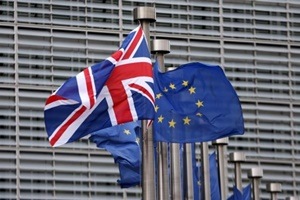After avoiding the possibility of a Grexit, the European Union (EU) faces the risk of the UK’s exit. Formed with the aim of providing its member states the benefit of operating as a single market allowing for free trade, the EU (and the UK) is now challenged with the likelihood of fragmentation and consequent economic instability.
The threat of a possible Brexit— to be decided by a referendum on June 23—will have a detrimental effect on UK-EU relations, as well as the rest of the world. A vote for autonomy will have dire consequences on several factors affecting the country’s GDP, including trade which constitutes approximately 60% of the UK’s GDP. The UK’s financial sector benefits greatly from its trading relations with its largest trading partner, the EU—in 2014, the EU accounted for 45% of UK’s exports, and 53% of its imports.
Recent papers published by the OECD and CEP/LSE examine the various choices of post-Brexit trade models the UK could possibly adopt as scenarios that are “optimistic”—joining the European Economic Area (EEA), “central”—rejoining the European Free Trade Agreement (EFTA), or signing bilateral treaties with the EU, and “pessimistic”—having the World Trade Organisation (WTO) govern the rules of UK-EU trade. Short term effects of Brexit see a sharp decline in UK’s GDP—a fall of 1.3% in 2018, 3.3% in 2020, and 2.5% in 2023. The long term effects of the “optimistic” scenario, would posit a decline in the UK’s real GDP by 2.7%, the “central” scenarios a decline of 5.1%, and the “pessimistic” scenario a decline of 7.7% by 2030.
Moreover, it will be complex to negotiate a new trade agreement with the EU, and there is no clear consensus as to which method would be adopted, even among proponents of Brexit. UK-EU trade will become more costly and UK trade with non-EU nations will become less advantageous and have a longer processing time. With the UK’s GDP growth rate at 2.4% and the EU’s at 0.5%, both economies face grave financial threats from the possible Brexit, as well as the rapidly growing economies of developing nations.


